This building is famous as “Akasaka Rikyu (Palace)” or “Akasaka Geihinkan (State Guest House).” Hereinafter we call it as “Akasaka Palace.”
The Akasaka Palace, State Guest House
Akasaka Palace was initially constructed as the Crown Prince’s residence in 1909. Tohkuma Katayama who was one of the first followers of Prof. Josiah Conder (the hired foreign technical advisor for civil works in the Meiji Government), designed this construction. Speaking of the first follower of Josiah Conder, Kingo Tatsuno is more famous as the designer of the Tokyo Station Building and the main building of the Bank of Japan. Akasaka Palace is also beautiful with its glorious façade influenced by Josiah Conder.
From Yotsuya station to The Akasaka Palace
The closest train station is Yotsuya station of JR and Tokyo Metro. Both stations, JR and Tokyo Metro have elevators. But if you were to take Exit 1 of the Tokyo Metro, you will have to go a roundabout way to reach Route 20th, through the Shinjuku Street and then the slope along The Sophia (Johchi) University. We recommend taking the exit of atré, which is the shopping complex adjacent to the station, which has a clean multi-purpose restroom and is convenient for wheelchair users. It takes about five minutes on foot to the main gate of Akasaka Palace from Yotsuya Station and straight through Route 20th.
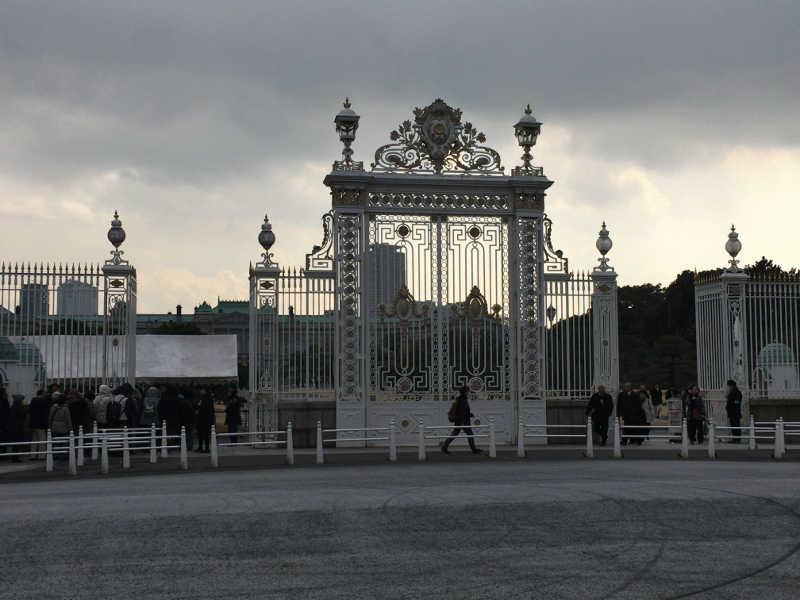
This gate is for Group travelers but the others have to go around the right about two minutes on foot and reach to the entrance for visitors.
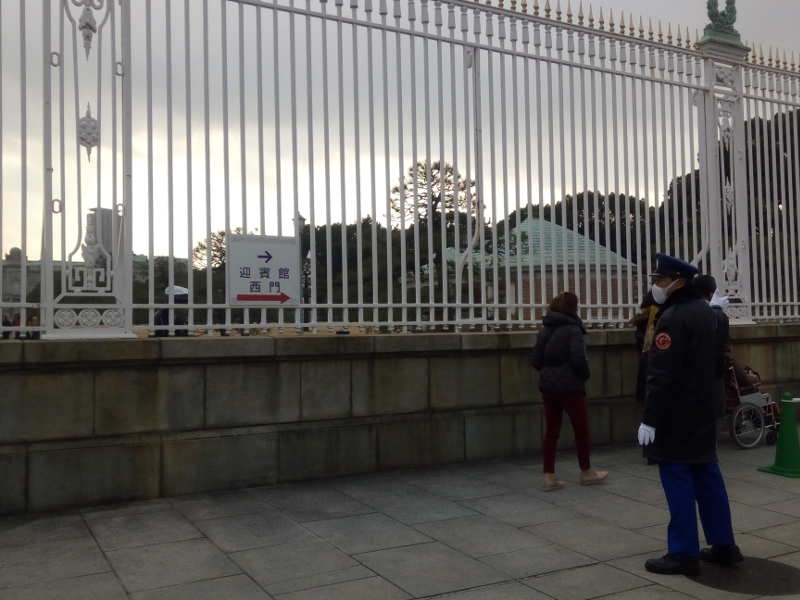
After entering and turning right as the guard indicates, you will reach a Security Check which looks like the security check in an airport. If you have any plastic bottles, you have to drink a bit of it in front of the guards’ eye. Troublesome! Wheelchair users have to go through a security check in another area so you need to decide where you meet after the security check with your companion.
Go straight and you will find the rest-room near the entrance of the building. It is better to use it because there are no rest-rooms in the building.
Additionally, you can rent a guide system at 200 yen here.
Interior of Akasaka Palace
The entrance is a steep set of stairs and wheel-chair users have to go through another route.You can meet with your companions at the point after the entrance hall, but then, you need to use the elevator apart from the ordinary tour course to go up the second floor.After the second floor tour, a wheelchair user will have to use the same elevator again to go down apart from the ordinary course and go out to the Front Garden. Since other people go out from the side exit of the main building to go to the main garden (on the back side of the main building), it is better for wheelchair users to discuss where to meet your partner beforehand.
We are not allowed to take pictures inside of this building.It is nine meters from the ceiling to the floor and the ceiling paintings are painted by famous artists and are so glorious. The marble columns are imported from various countries. I couldn’t find but there might be a fossil ammonite.
Not allowed to take a picture inside and the following pictures have been reprinted from the website of the Cabinet Office.
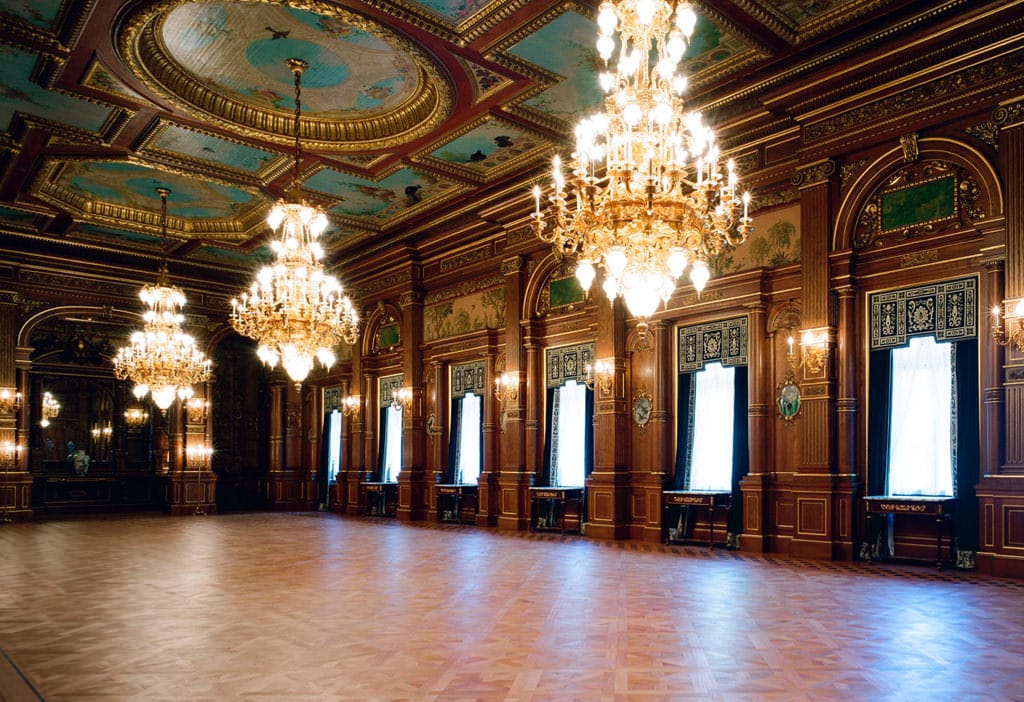
The contrast between the cloisonné paint of the birds and flowers made by Japanese artist “Watanabe-Seitei” and the oil paintings by French artists are so beautiful.
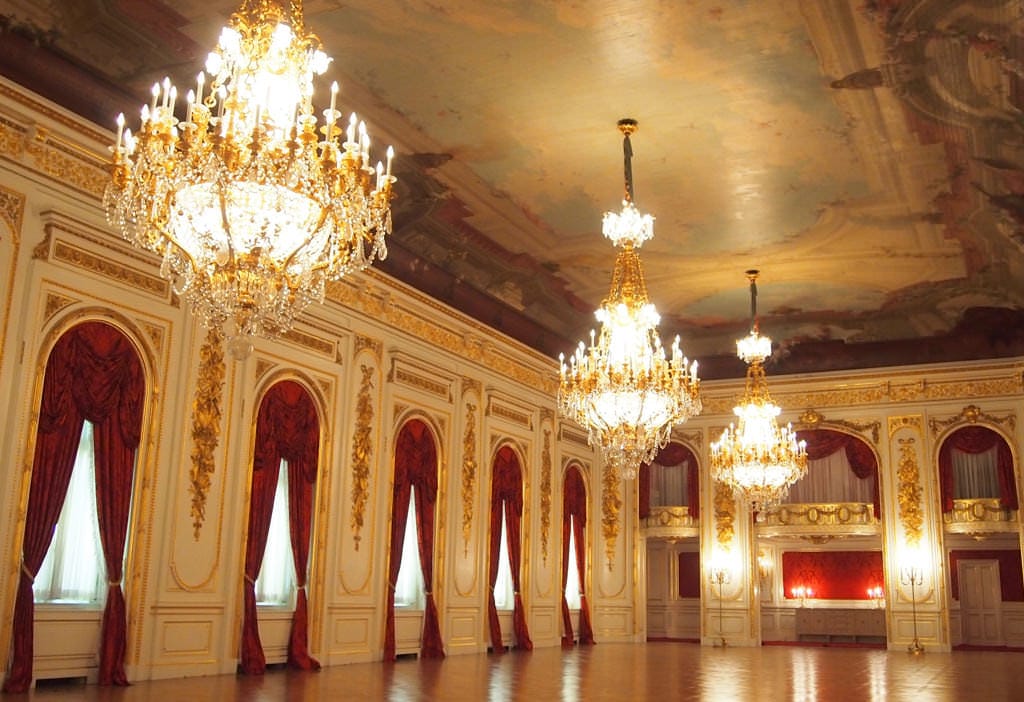
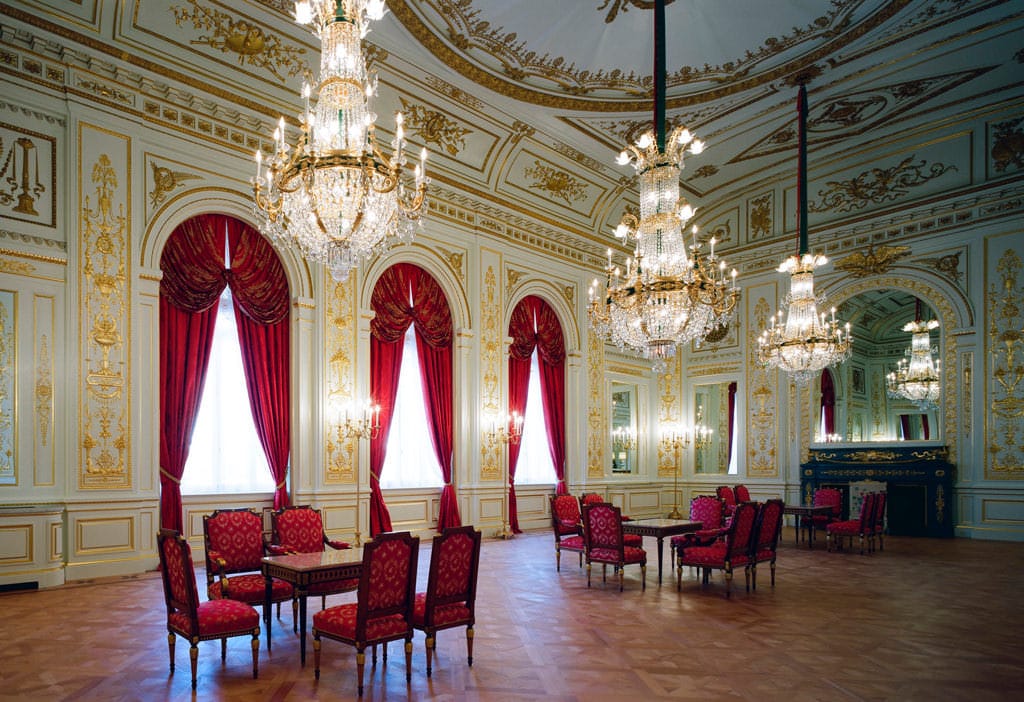
Hagoromo-no-ma (the room of the celestial raiment of the angel) is a ball room with beautiful medieval French interior. Here and the Sai-ran-no-ma (the room of the phoenix) are very beautiful with their gold leafed pattern on the plaster wall.
Main Garden
After going out from the building, go around the main garden and you will see the beautiful view of the fountain and the building.

Fountain in the main garden 
In front of the fountain
Statues of a Griffin (imaginary animal) and a killer whale are placed on the fountain.We were discussing about them that the former might be a Kirin with wings (imaginary animal which is placed on the rail ornament on the Nihombashi Bridge) and the latter might be a carp or a catfish, however, it was found that the former is a Griffin and the latter is a killer whale after all.
When we turn around to the front garden, we can see the entire main building and these are the best shooting points.

There is not much comfort for a wheelchair user because the tour course were uneven stone-pavements and gravel roads. It would be better to bring a high quality pad on your wheel chair.
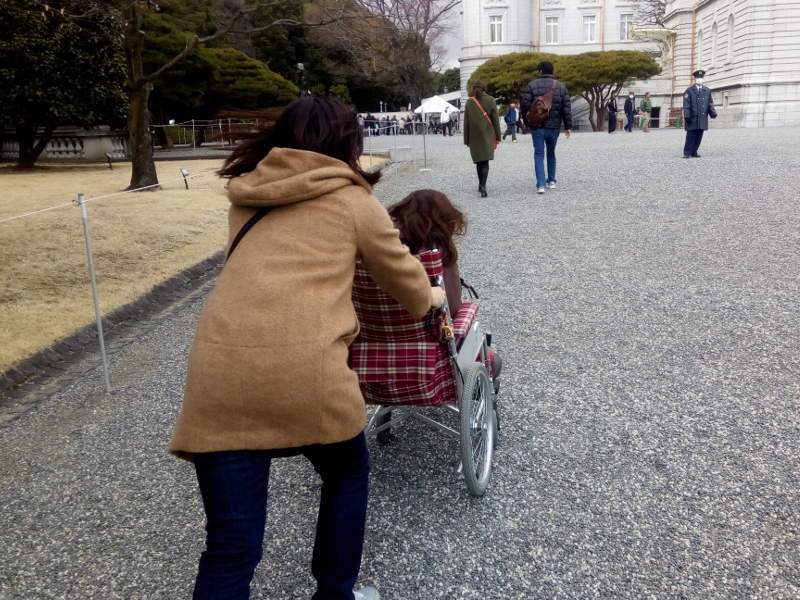
Gravel road 
Stone pavement road
It takes about one hour from the start to the goal. It might be good to spend the time taking a coffee in the café at the front garden overseeing the exotic view after the tour.

Today (February 17th) is so cold that no one was taking a coffee in there. (Laugh!)
Please have a nice trip at the Akasaka Palace.
On a final note, I am concerned a little bit about the wheelchair accessibility in the Yotsuya station and the URL of the map in the Yotsuya station, both JR and Tokyo Metro is shown below just for information.
Thank you for reading through to the end.
Brief review from YUKORIN, a wheelchair user among our members
Now, let me show you the route for wheelchair users around the Akasaka Palace.
Wheelchair users and their attendants are allowed to enter the main entrance after walking through the front garden. There is a wheelchair ramp in the entrance hall. A staff member asked us to take a staff elevator inside the building. However, attendants might feel a little hard to push wheelchairs on the gravel road in the front garden as well as on the stone-paved road in the main garden. Only one wheelchair accessible restroom is located in the 1st office building and the location might be a bit hard to find. The corridor is wide enough for wheelchair users and the exhibits are placed on the appropriate heights for them. Therefore, I enjoyed seeing the luxurious interiors. By the way, the route for wheelchair users is not open to the public. Only wheelchair users and their attendants are allowed to take the route and the elevator for security reasons.
